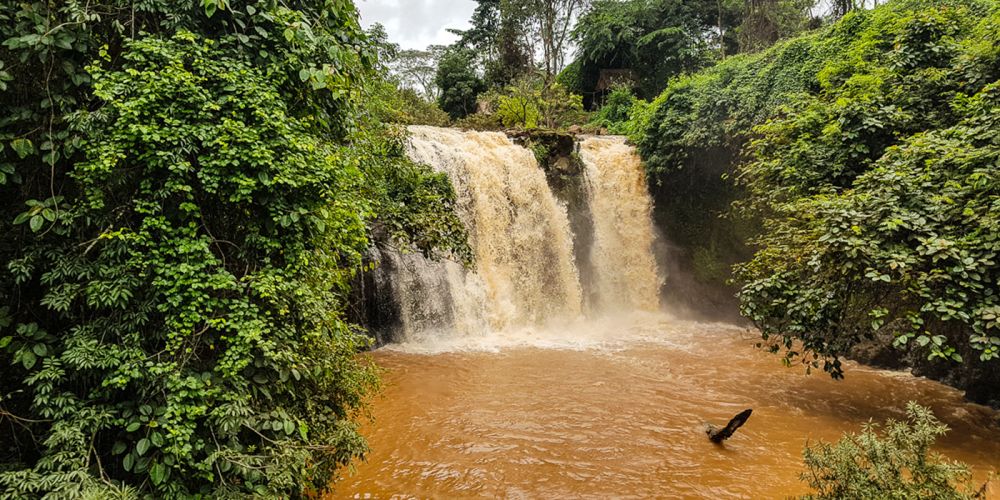

Set amidst the verdant jungles of Cambodia's northeastern province of Ratanakiri, the Kachanh Waterfall is a natural wonder that has been drawing visitors for years. Ratanakiri, known for its remote beauty and ethnic diversity, offers a rich tapestry of natural and cultural attractions, with Kachanh Waterfall being among its most captivating treasures.
The history of tourism in Ratanakiri, and at Kachanh Waterfall in particular, is a story of gradual discovery and increasing appreciation for the region's pristine landscapes. After the end of conflicts in Cambodia in the late 20th century, Ratanakiri slowly opened its doors to the outside world. Kachanh Waterfall, along with the province's unique crater lakes and indigenous cultures, became a focal point for adventurous travelers seeking off-the-beaten-path experiences.
Initially, the infrastructure was modest, with limited access and basic facilities. However, as awareness of the region's beauty spread, the Cambodian government and various NGOs began to see the potential for sustainable tourism as a means for economic development and nature conservation.
With the rise of eco-tourism, efforts were made to develop the area in a way that would protect its natural resources while benefiting local communities. This included the improvement of roads leading to Kachanh Waterfall, the establishment of visitor centers, and the incorporation of community-based tourism initiatives that offer homestays and guided tours by locals.
Ratanakiri's eco-tourism approach aims to educate visitors about the importance of preserving the environment and the traditional ways of life of the indigenous people. The serene ambiance of the Kachanh Waterfall, complemented by its lush surroundings, provides an ideal spot for eco-tourism activities such as hiking, bird watching, and cultural exchanges with the nearby villages.As of recent years, the latest tourism trends at Kachanh Waterfall and in Ratanakiri province have been aligned with the global movement towards responsible travel. Tourists are increasingly seeking authentic experiences that offer personal growth, connection to nature, and meaningful interactions with local communities.
Another emerging trend is digital nomadism, where individuals with the flexibility to work remotely are drawn to destinations like Kachanh Waterfall for their tranquility and inspiration. This trend is facilitated by improvements in internet connectivity in the region, allowing for longer stays and deeper exploration of Ratanakiri's hidden gems.
In conclusion, Kachanh Waterfall, with its enchanting cascades and the promise of an immersive journey into nature's embrace, remains a cornerstone of Ratanakiri's tourism appeal. The fusion of scenic allure and cultural depth ensures that this destination will continue to captivate the hearts of travelers for years to come.